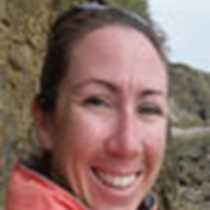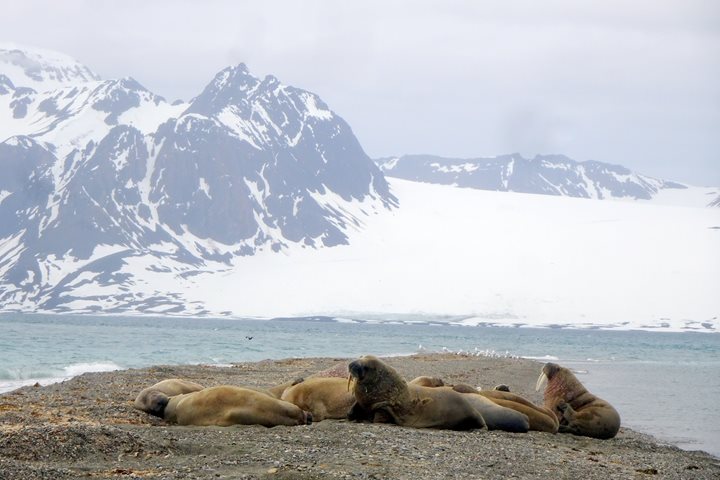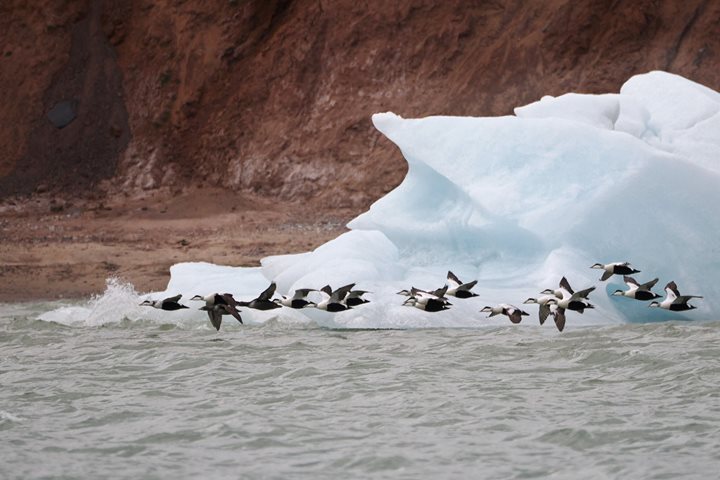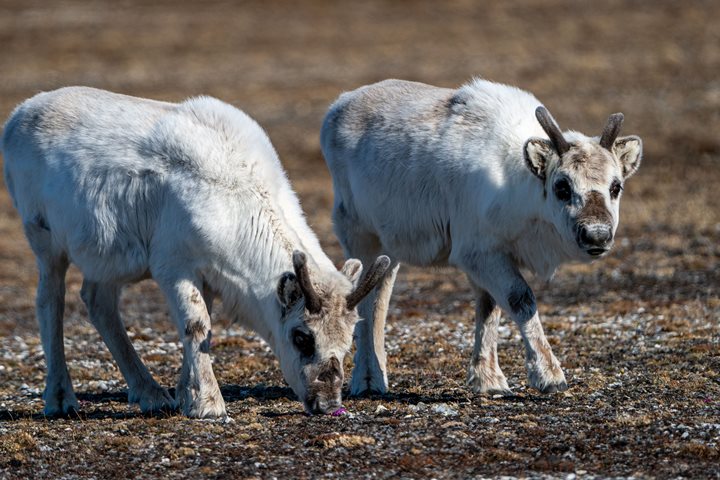As our amazing journey draws to an end aboard National Geographic Endurance, we were very lucky to finish on an extraordinarily high note. We spent our morning nestled between a beautiful glacier and stunning bird nesting cliffs in the magnificent “14th of July Bay.” Fjortende Julibukta is situated near the mouth of Krossfjord, a fjord system that faces directly toward the southwest; from this direction, it is heavily influenced by the inflow of warm waters of the Gulf Stream, and it provided us with a fabulous glimpse into the colours and vivacity of arctic spring. Our various hikes ashore allowed observation of small yet mighty arctic spring flowers. Glimpses of pink, yellow, and white flowers speckled the shoreline as kittiwakes swooped down and collected nest building material from the shores of the bay.
Cracks and bangs could be heard from the nearby glacial tongue. Arriving at an extreme low tide, the receding water and light winds had left a spectacle of small diamond-like shards of stunning glacial mini-icebergs on the beach. A short Zodiac tour of the bird cliffs after our morning hike revealed the cheerful, clown-like faces of one of our most jovial-looking bird species. Atlantic puffins were spotted resting fairly low on the bird cliffs as they prepare themselves for the upcoming nesting season.
Leaving the bay at lunch time, we planned an afternoon at sea with a particular mission in mind. We headed offshore, following the clues laid out on the ship’s charts. The bathymetry of Svalbard’s western shore and the currents of the Gulf Stream provide a perfect feeding ground for many cetaceans. We were lucky enough to spot white-beaked dolphins, minke whales, humpback whales, and even fin whales as we enjoyed our final dinner onboard. Life is good.







